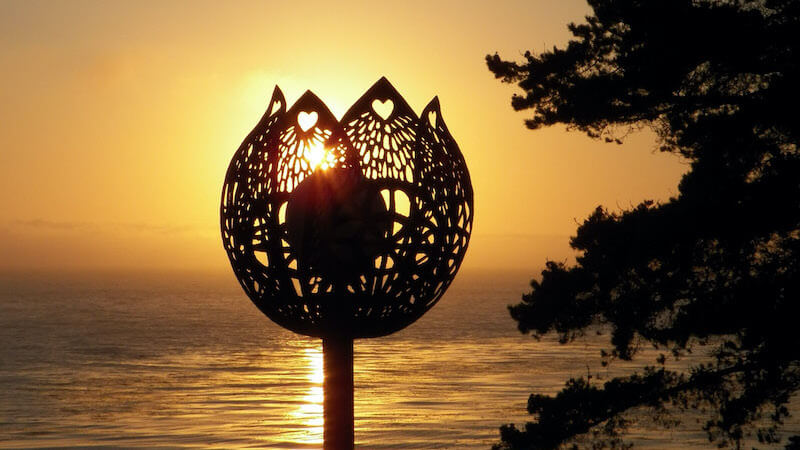
Do you practice being “present” in the moment? Now may be the time to enhance your practice and level up for a life that is more alive.
Lifelong educators of transformation, Russell and Linda Delman say a sense of “livingness” and “aliveness” is waiting for you if you can practice what they call, “presencing.” Our current social and global challenges may be the very inspiration we need.
“It’s the perfect time to practice presencing,” says Linda. “It’s a lifesaver from all the challenges, the busyness, and the global struggles. There’s nothing better to do than become quiet and more present with yourself. You have some space to be able to observe, to sense what’s happening, but you have a little distance from it, so you don’t get eaten up by it.”
One of the first steps is to find “the zero point,” where you’re not activated in any direction, according to Russell. “This is potent ground for visioning what’s wanted in our lives,” he says. “What are the voices that we haven’t been listening to that would really appreciate attention? It’s a way of integrating the soul life and the spirit life with everyday life. How many of us always feel consumed with the to-do list, but we don’t give our loving attention to our destiny?”
In advance of their upcoming workshop, The Embodied Life™: Presencing and Re-visioning, the Delmans took a moment to help us get centered in this concept.
Christine Chen: What is the difference between being present and presencing a moment?
Russell Delman: When we say “I’m going to be present,” it can have a static feel. It’s almost a demand. But, presencing a moment brings it into movement; I’m alive in this moment. I’m bringing myself forward into it. It conveys a sense of livingness.
Linda Delman: It’s a timeless sense of being present in the moment. Presencing has this quality of… you have all the time in the world. You are encountering something, and it is encountering you. It is a bigger moment than even the moment.
CC: How can we shift into presencing during this complex, challenging moment in our lives?
RD: Your bodily living, your sensing into your body — what we call “embodiment” — is a doorway to presencing a moment. This is different than... get my body healthy by running, doing yoga… all of which are great things. This is a little different. Sense your right foot. Where is it, what’s it touching? Sense your left foot. Notice, to do that, you can’t be spinning out in your mind about other things, you can’t be lost in your emotions. You direct your attention through your embodiment to a present moment. The body is a doorway, because it’s always right here. We’re talking about how aliveness to our embodiment can bring us right here.
CC: How does Feldenkrais relate to presencing?
LD: You’re doing the unconventional movement, that with Feldenkrais, we work with our attention — awareness through movement. It was really to train the attention to divide one’s attention, to be inside oneself, to hear thoughts, to do movements, and to experience the unexpected. This awareness through movement allows the attention to build the attention — to build the faculty of awareness while you’re moving.
RD: Moshe Feldenkrais had a great understanding of how the human brain works — early intuition, which science has now confirmed — about how we can learn new patterns. If we can, in a gentle way, unwind some of our compulsive physical patterns — breathing, lifting an arm, turning — if we can shift those in profound ways, we actually shift the brain. Our brain becomes, at least for a little while, more open to learning. It’s not only physical, but you become more open as a human being — maybe to have new thoughts, new feelings. Movement can touch the whole human being. He was interested in helping human beings touch their potential.
CC: How do you integrate nature into your work with potential?
RD: We’ve been studying zen meditation for 50 years. The practice of sitting with awareness, integrated with the practice of moving with awareness, brings a much larger picture. And then, connecting that to the outer world helps complete the picture.
LD: When one is present, one has space inside the body and is also in the world with space around the body. And, when you are in nature, it’s a different encounter. One can actually experience the livingness of nature, and even within themselves. There is a relationship and a depth with that, which comes with presence and presencing.
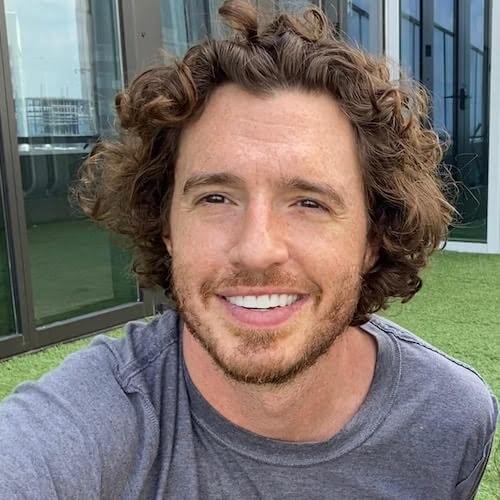
“Remembering to be as self compassionate as I can and praying to the divine that we're all a part of.”
–Aaron
“Prayer, reading, meditation, walking.”
–Karen
“Erratically — which is an ongoing stream of practice to find peace.”
–Charles
“Try on a daily basis to be kind to myself and to realize that making mistakes is a part of the human condition. Learning from our mistakes is a journey. But it starts with compassion and caring. First for oneself.”
–Steve
“Physically: aerobic exercise, volleyball, ice hockey, cycling, sailing. Emotionally: unfortunately I have to work to ‘not care’ about people or situations which may end painfully. Along the lines of ‘attachment is the source of suffering’, so best to avoid it or limit its scope. Sad though because it could also be the source of great joy. Is it worth the risk?“
–Rainer
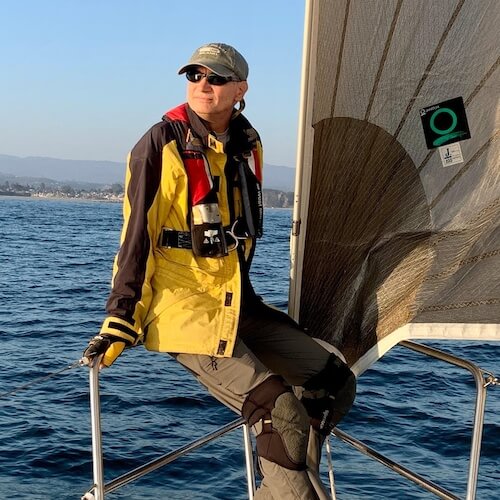

“It's time for my heart to be nurtured on one level yet contained on another. To go easy on me and to allow my feelings to be validated, not judged harshly. On the other hand, to let the heart rule with equanimity and not lead the mind and body around like a master.”
–Suzanne
“I spend time thinking of everything I am grateful for, and I try to develop my ability to express compassion for myself and others without reservation. I take time to do the things I need to do to keep myself healthy and happy. This includes taking experiential workshops, fostering relationships, and participating within groups which have a similar interest to become a more compassionate and fulfilled being.“
–Peter
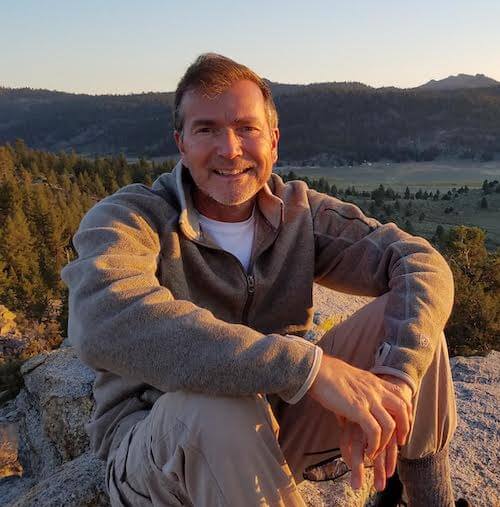
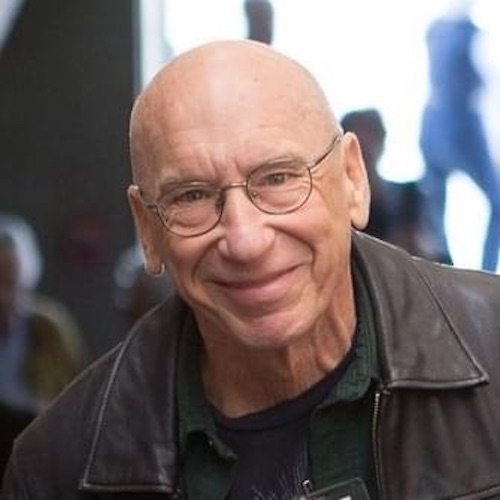
“Self-forgiveness for my own judgments. And oh yeah, coming to Esalen.”
–David B.
“Hmm, this is a tough one! I guess I take care of my heart through fostering relationships with people I feel connected to. Spending quality time with them (whether we're on the phone, through messages/letters, on Zoom, or in-person). Being there for them, listening to them, sharing what's going on with me, my struggles and my successes... like we do in the Esalen weekly Friends of Esalen Zoom sessions!”
–Lori

“I remind myself in many ways of the fact that " Love is all there is!" LOVE is the prize and this one precious life is the stage we get to learn our lessons. I get out into nature, hike, camp, river kayak, fly fish, garden, I create, I dance (not enough!), and I remain grateful for each day, each breath, each moment. Being in the moment, awake, and remembering the gift of life and my feeling of gratitude for all of creation.”
–Steven
“My physical heart by limiting stress and eating a heart-healthy diet. My emotional heart by staying in love with the world and by knowing that all disappointment and loss will pass.“
–David Z.
Today, September 29, is World Heart Day. Strike up a conversation with your own heart and as you feel comfortable, encourage others to do the same. As part of our own transformations and self-care, we sometimes ask for others to illuminate and enliven our hearts or speak our love language.
What if we could do this for ourselves too, even if just for today… or to start a heart practice, forever?
The Delmans’ workshop is December 10-12, 2021: The Embodied Life™: Presencing and Re-visioning. Add yourself to the wait list to be notified of an opening or a potential, added workshop.
Christine Chen is a two-time Emmy winning journalist, best-selling author, California native, and senior teacher of yoga and Ayurveda.

Do you practice being “present” in the moment? Now may be the time to enhance your practice and level up for a life that is more alive.
Lifelong educators of transformation, Russell and Linda Delman say a sense of “livingness” and “aliveness” is waiting for you if you can practice what they call, “presencing.” Our current social and global challenges may be the very inspiration we need.
“It’s the perfect time to practice presencing,” says Linda. “It’s a lifesaver from all the challenges, the busyness, and the global struggles. There’s nothing better to do than become quiet and more present with yourself. You have some space to be able to observe, to sense what’s happening, but you have a little distance from it, so you don’t get eaten up by it.”
One of the first steps is to find “the zero point,” where you’re not activated in any direction, according to Russell. “This is potent ground for visioning what’s wanted in our lives,” he says. “What are the voices that we haven’t been listening to that would really appreciate attention? It’s a way of integrating the soul life and the spirit life with everyday life. How many of us always feel consumed with the to-do list, but we don’t give our loving attention to our destiny?”
In advance of their upcoming workshop, The Embodied Life™: Presencing and Re-visioning, the Delmans took a moment to help us get centered in this concept.
Christine Chen: What is the difference between being present and presencing a moment?
Russell Delman: When we say “I’m going to be present,” it can have a static feel. It’s almost a demand. But, presencing a moment brings it into movement; I’m alive in this moment. I’m bringing myself forward into it. It conveys a sense of livingness.
Linda Delman: It’s a timeless sense of being present in the moment. Presencing has this quality of… you have all the time in the world. You are encountering something, and it is encountering you. It is a bigger moment than even the moment.
CC: How can we shift into presencing during this complex, challenging moment in our lives?
RD: Your bodily living, your sensing into your body — what we call “embodiment” — is a doorway to presencing a moment. This is different than... get my body healthy by running, doing yoga… all of which are great things. This is a little different. Sense your right foot. Where is it, what’s it touching? Sense your left foot. Notice, to do that, you can’t be spinning out in your mind about other things, you can’t be lost in your emotions. You direct your attention through your embodiment to a present moment. The body is a doorway, because it’s always right here. We’re talking about how aliveness to our embodiment can bring us right here.
CC: How does Feldenkrais relate to presencing?
LD: You’re doing the unconventional movement, that with Feldenkrais, we work with our attention — awareness through movement. It was really to train the attention to divide one’s attention, to be inside oneself, to hear thoughts, to do movements, and to experience the unexpected. This awareness through movement allows the attention to build the attention — to build the faculty of awareness while you’re moving.
RD: Moshe Feldenkrais had a great understanding of how the human brain works — early intuition, which science has now confirmed — about how we can learn new patterns. If we can, in a gentle way, unwind some of our compulsive physical patterns — breathing, lifting an arm, turning — if we can shift those in profound ways, we actually shift the brain. Our brain becomes, at least for a little while, more open to learning. It’s not only physical, but you become more open as a human being — maybe to have new thoughts, new feelings. Movement can touch the whole human being. He was interested in helping human beings touch their potential.
CC: How do you integrate nature into your work with potential?
RD: We’ve been studying zen meditation for 50 years. The practice of sitting with awareness, integrated with the practice of moving with awareness, brings a much larger picture. And then, connecting that to the outer world helps complete the picture.
LD: When one is present, one has space inside the body and is also in the world with space around the body. And, when you are in nature, it’s a different encounter. One can actually experience the livingness of nature, and even within themselves. There is a relationship and a depth with that, which comes with presence and presencing.

“Remembering to be as self compassionate as I can and praying to the divine that we're all a part of.”
–Aaron
“Prayer, reading, meditation, walking.”
–Karen
“Erratically — which is an ongoing stream of practice to find peace.”
–Charles
“Try on a daily basis to be kind to myself and to realize that making mistakes is a part of the human condition. Learning from our mistakes is a journey. But it starts with compassion and caring. First for oneself.”
–Steve
“Physically: aerobic exercise, volleyball, ice hockey, cycling, sailing. Emotionally: unfortunately I have to work to ‘not care’ about people or situations which may end painfully. Along the lines of ‘attachment is the source of suffering’, so best to avoid it or limit its scope. Sad though because it could also be the source of great joy. Is it worth the risk?“
–Rainer


“It's time for my heart to be nurtured on one level yet contained on another. To go easy on me and to allow my feelings to be validated, not judged harshly. On the other hand, to let the heart rule with equanimity and not lead the mind and body around like a master.”
–Suzanne
“I spend time thinking of everything I am grateful for, and I try to develop my ability to express compassion for myself and others without reservation. I take time to do the things I need to do to keep myself healthy and happy. This includes taking experiential workshops, fostering relationships, and participating within groups which have a similar interest to become a more compassionate and fulfilled being.“
–Peter


“Self-forgiveness for my own judgments. And oh yeah, coming to Esalen.”
–David B.
“Hmm, this is a tough one! I guess I take care of my heart through fostering relationships with people I feel connected to. Spending quality time with them (whether we're on the phone, through messages/letters, on Zoom, or in-person). Being there for them, listening to them, sharing what's going on with me, my struggles and my successes... like we do in the Esalen weekly Friends of Esalen Zoom sessions!”
–Lori

“I remind myself in many ways of the fact that " Love is all there is!" LOVE is the prize and this one precious life is the stage we get to learn our lessons. I get out into nature, hike, camp, river kayak, fly fish, garden, I create, I dance (not enough!), and I remain grateful for each day, each breath, each moment. Being in the moment, awake, and remembering the gift of life and my feeling of gratitude for all of creation.”
–Steven
“My physical heart by limiting stress and eating a heart-healthy diet. My emotional heart by staying in love with the world and by knowing that all disappointment and loss will pass.“
–David Z.
Today, September 29, is World Heart Day. Strike up a conversation with your own heart and as you feel comfortable, encourage others to do the same. As part of our own transformations and self-care, we sometimes ask for others to illuminate and enliven our hearts or speak our love language.
What if we could do this for ourselves too, even if just for today… or to start a heart practice, forever?
The Delmans’ workshop is December 10-12, 2021: The Embodied Life™: Presencing and Re-visioning. Add yourself to the wait list to be notified of an opening or a potential, added workshop.

Do you practice being “present” in the moment? Now may be the time to enhance your practice and level up for a life that is more alive.
Lifelong educators of transformation, Russell and Linda Delman say a sense of “livingness” and “aliveness” is waiting for you if you can practice what they call, “presencing.” Our current social and global challenges may be the very inspiration we need.
“It’s the perfect time to practice presencing,” says Linda. “It’s a lifesaver from all the challenges, the busyness, and the global struggles. There’s nothing better to do than become quiet and more present with yourself. You have some space to be able to observe, to sense what’s happening, but you have a little distance from it, so you don’t get eaten up by it.”
One of the first steps is to find “the zero point,” where you’re not activated in any direction, according to Russell. “This is potent ground for visioning what’s wanted in our lives,” he says. “What are the voices that we haven’t been listening to that would really appreciate attention? It’s a way of integrating the soul life and the spirit life with everyday life. How many of us always feel consumed with the to-do list, but we don’t give our loving attention to our destiny?”
In advance of their upcoming workshop, The Embodied Life™: Presencing and Re-visioning, the Delmans took a moment to help us get centered in this concept.
Christine Chen: What is the difference between being present and presencing a moment?
Russell Delman: When we say “I’m going to be present,” it can have a static feel. It’s almost a demand. But, presencing a moment brings it into movement; I’m alive in this moment. I’m bringing myself forward into it. It conveys a sense of livingness.
Linda Delman: It’s a timeless sense of being present in the moment. Presencing has this quality of… you have all the time in the world. You are encountering something, and it is encountering you. It is a bigger moment than even the moment.
CC: How can we shift into presencing during this complex, challenging moment in our lives?
RD: Your bodily living, your sensing into your body — what we call “embodiment” — is a doorway to presencing a moment. This is different than... get my body healthy by running, doing yoga… all of which are great things. This is a little different. Sense your right foot. Where is it, what’s it touching? Sense your left foot. Notice, to do that, you can’t be spinning out in your mind about other things, you can’t be lost in your emotions. You direct your attention through your embodiment to a present moment. The body is a doorway, because it’s always right here. We’re talking about how aliveness to our embodiment can bring us right here.
CC: How does Feldenkrais relate to presencing?
LD: You’re doing the unconventional movement, that with Feldenkrais, we work with our attention — awareness through movement. It was really to train the attention to divide one’s attention, to be inside oneself, to hear thoughts, to do movements, and to experience the unexpected. This awareness through movement allows the attention to build the attention — to build the faculty of awareness while you’re moving.
RD: Moshe Feldenkrais had a great understanding of how the human brain works — early intuition, which science has now confirmed — about how we can learn new patterns. If we can, in a gentle way, unwind some of our compulsive physical patterns — breathing, lifting an arm, turning — if we can shift those in profound ways, we actually shift the brain. Our brain becomes, at least for a little while, more open to learning. It’s not only physical, but you become more open as a human being — maybe to have new thoughts, new feelings. Movement can touch the whole human being. He was interested in helping human beings touch their potential.
CC: How do you integrate nature into your work with potential?
RD: We’ve been studying zen meditation for 50 years. The practice of sitting with awareness, integrated with the practice of moving with awareness, brings a much larger picture. And then, connecting that to the outer world helps complete the picture.
LD: When one is present, one has space inside the body and is also in the world with space around the body. And, when you are in nature, it’s a different encounter. One can actually experience the livingness of nature, and even within themselves. There is a relationship and a depth with that, which comes with presence and presencing.

“Remembering to be as self compassionate as I can and praying to the divine that we're all a part of.”
–Aaron
“Prayer, reading, meditation, walking.”
–Karen
“Erratically — which is an ongoing stream of practice to find peace.”
–Charles
“Try on a daily basis to be kind to myself and to realize that making mistakes is a part of the human condition. Learning from our mistakes is a journey. But it starts with compassion and caring. First for oneself.”
–Steve
“Physically: aerobic exercise, volleyball, ice hockey, cycling, sailing. Emotionally: unfortunately I have to work to ‘not care’ about people or situations which may end painfully. Along the lines of ‘attachment is the source of suffering’, so best to avoid it or limit its scope. Sad though because it could also be the source of great joy. Is it worth the risk?“
–Rainer


“It's time for my heart to be nurtured on one level yet contained on another. To go easy on me and to allow my feelings to be validated, not judged harshly. On the other hand, to let the heart rule with equanimity and not lead the mind and body around like a master.”
–Suzanne
“I spend time thinking of everything I am grateful for, and I try to develop my ability to express compassion for myself and others without reservation. I take time to do the things I need to do to keep myself healthy and happy. This includes taking experiential workshops, fostering relationships, and participating within groups which have a similar interest to become a more compassionate and fulfilled being.“
–Peter


“Self-forgiveness for my own judgments. And oh yeah, coming to Esalen.”
–David B.
“Hmm, this is a tough one! I guess I take care of my heart through fostering relationships with people I feel connected to. Spending quality time with them (whether we're on the phone, through messages/letters, on Zoom, or in-person). Being there for them, listening to them, sharing what's going on with me, my struggles and my successes... like we do in the Esalen weekly Friends of Esalen Zoom sessions!”
–Lori

“I remind myself in many ways of the fact that " Love is all there is!" LOVE is the prize and this one precious life is the stage we get to learn our lessons. I get out into nature, hike, camp, river kayak, fly fish, garden, I create, I dance (not enough!), and I remain grateful for each day, each breath, each moment. Being in the moment, awake, and remembering the gift of life and my feeling of gratitude for all of creation.”
–Steven
“My physical heart by limiting stress and eating a heart-healthy diet. My emotional heart by staying in love with the world and by knowing that all disappointment and loss will pass.“
–David Z.
Today, September 29, is World Heart Day. Strike up a conversation with your own heart and as you feel comfortable, encourage others to do the same. As part of our own transformations and self-care, we sometimes ask for others to illuminate and enliven our hearts or speak our love language.
What if we could do this for ourselves too, even if just for today… or to start a heart practice, forever?
The Delmans’ workshop is December 10-12, 2021: The Embodied Life™: Presencing and Re-visioning. Add yourself to the wait list to be notified of an opening or a potential, added workshop.
Christine Chen is a two-time Emmy winning journalist, best-selling author, California native, and senior teacher of yoga and Ayurveda.